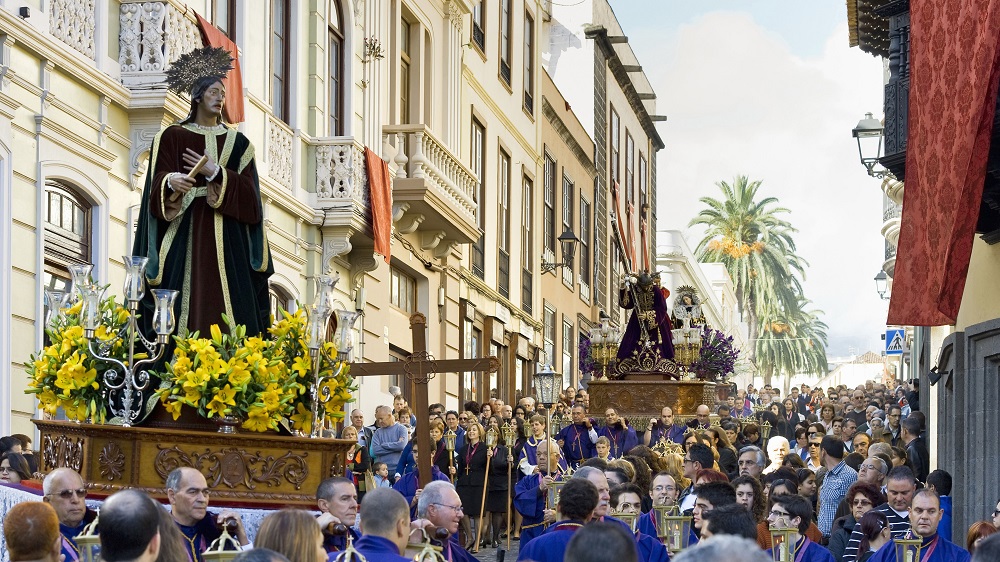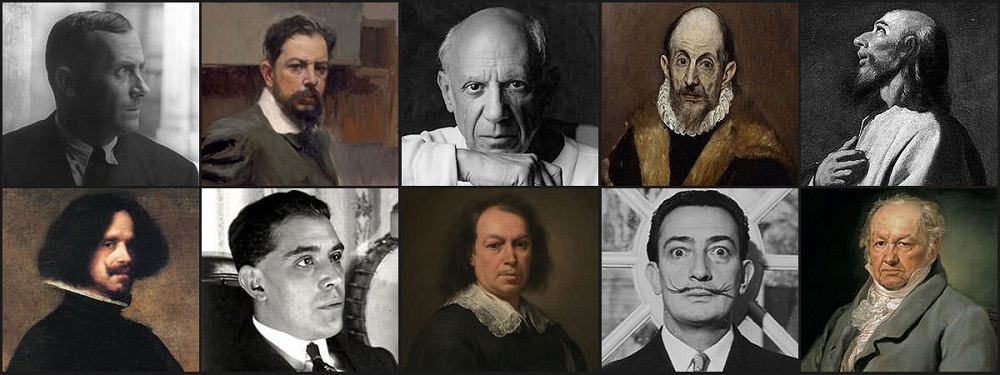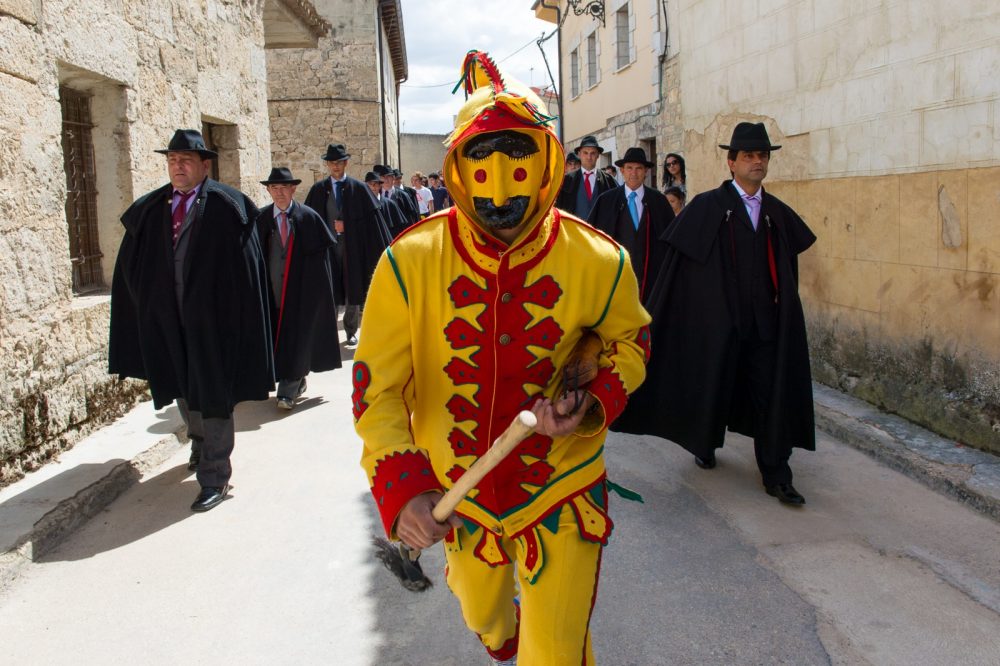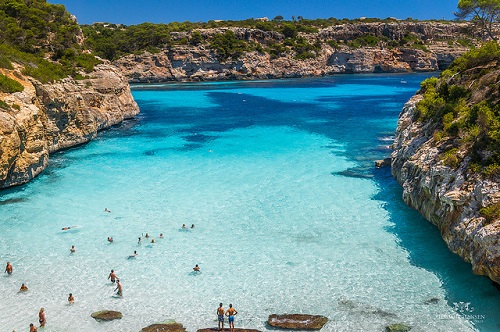Spring in Seville means two principal celebrations, Semana Santa and Feria the Abril are the most important festivals in Spain. Moreover, Semana Santa in Seville is one of the most iconic celebrations in the week leading up to Easter, which is the best time to be in the city. Also known as Holy Week and is observed by Catholics to commemorate the Passion of Jesus Christ, his suffering, and death on the cross.
1- What does mean Semana Santa?
 via – tripsavvy
via – tripsavvy
Semana Santa marks the arrival of spring in Seville with a long week of celebrations that fills the churches and streets. The festival is celebrated all over the country and is a significant religious celebration in Spain. Depending on where you stay, each city has its way of commemorating the festival like in the southern of Andalucía, you will find extravagant festivals; in Castilla y León, more gloomy affairs predominate. The celebrations can feature singing as in Seville and skeleton dances in Verges, Catalonia, or drumming in Cuenca.
The history of this celebration date back to the middle ages and existed before that. Moreover, Semana Santa is about one week honored by Christians around the World, which begins on Palm Sunday and lasts until Easter Sunday. This week is about parades and follows the story of Jesus Christ’s death and resurrection.In Seville, each church has a brotherhood or social club. Every brotherhood is charged one day during the Holy Week to do a procession from their church to the cathedral and back. There are two floats in every parade, one of Jesus Christ and one of the Virgin Mary. If your church located very far from the cathedral, the procession can take up to 14 hours.
2- When does Semana Santa take place in 2023?
This year Semana Santa begins on Palm Sunday, 2nd April, and ends on 9th Sunday, April with Easter Sunday. Some cities will have parades all week, while others will hold major ones on days of the week. The date may change every year, depending on how the calendar moves.
3- The traditional costumes in the Semana Santa:
 via – devoursevillefoodtours
via – devoursevillefoodtours
The traditional outfits are stunning, and the religious brotherhoods dressed in traditional robes with pointed and tall hats are named the Capirotes.
 via – sevilla.abc
via – sevilla.abc
Besides, not only the Hermandad wore impressive clothes during the holy week also women dressed in fabulous black-lace veils called la Mantilla. These traditional outfits are usually dressed on the Thursday of Semana Santa, but it is sometimes also worn on Good Friday.
4- The parts of Semana Santa in Seville:
The holy week has some important parts to succeed the processions here are some of the most essential parts:
Hermandad:
Each church in Seville has its brotherhoods or Hermandad attached to it. Also, they must take charge of the social calendar of the church and be able to organize a spectacular Holy week procession.
El Paso:
 via – stevenandrewmartin
via – stevenandrewmartin
The Pasos are the large floats held up by the Costaleros, who are members of the church’s brotherhoods. There are from 20 to 40 Costaleros per float, and they practice all year round, even in the extreme heat of August. They go under the floats, which can weigh up to a ton, and march for hours bearing them. Besides, The Pasos followed by musicians, and their actions directed by the Capataz using a language of knocks to guide the conduct of the Nazarenes. In addition, they leave their churches to go through the nearest streets to the cathedral and then return home.
Nazarenes:
 via – pinterest
via – pinterest
The procession includes other participants called Nazarenes dressed in a wide tunic with pointed hats named Capirotes. This dress is born of a wish to repent transgression without showing identity, as the head covering leaves only the eyes on display.
Furthermore, The Nazarenes are organized into subgroups and guided by a captain to guarantee orders and discipline. Also, the festival has 3000 Nazarenes participating in the processions and distributing sweets for children.
La Mantilla:
La Mantilla is a traditional Spanish lace or silk veil dressed over the head and shoulders of women. In other words, La Mantilla is a popular dress worn by women in Spain during events such as the Holy week, weddings, and bullfights.
 via – wikiwand
via – wikiwand
There are two types of La Mantilla; the first is women who wear black when they have an audience with the pope. The second is a white Mantilla addressed to the church wedding.
La Saeta:
La Saeta is a traditional religious song that also highlights the performance of the holly week in Seville during the processions. To chant la Saeta song must include the presence of the Paso as the hall crowd stands in complete silence.
La Madrugá:
 via – practicaespanol
via – practicaespanol
The most important night of the Semana Santa tradition is Holy Thursday, guiding into Good Friday. Also, the Macarena is one of the most significant processions and the biggest and most-watched of the celebrations.
5- Where to see the processions?
 via – roomsevilla
via – roomsevilla
All brotherhoods walk behind a long-established path from their churches to the Cathedral and back on their assigned day. All run through the Official Path goes from La Campana Square down Sierpes Street into San Francisco Square and onto Constitución Avenue. These streets are organized with chairs called palcos for those who rent and pay for them, and locals often rent out their balconies. The city council circulates the official routes of each brotherhood and gives the approximate times of their arrival at each stop.
6- What to eat during Semana Santa?
 via – sevilla.abc
via – sevilla.abc
During the festival, remember to taste some delicious traditional food like Chocolate Easter eggs and fried Torrija, which is a traditional sweet Santa of bread soaked in milk and eggs and served with sugar or honey.
Semana Santa is an impressive experience to witness at least once in life. Whether you are religious or not, this celebration gathered religion, emotions, traditions, and parties all in one spectacular week in Seville.


 Top 10 Most Famous Spanish Artists and their Arts
Top 10 Most Famous Spanish Artists and their Arts
 El Colacho, the Baby Jumping Festival in Murcia Spain
El Colacho, the Baby Jumping Festival in Murcia Spain
 Discover The Most Beautiful Places In Mallorca, Spain
Discover The Most Beautiful Places In Mallorca, Spain